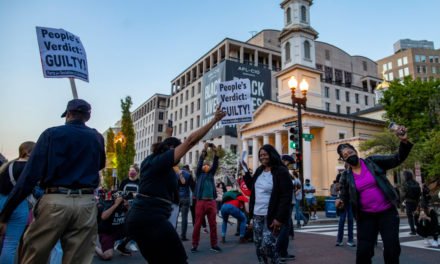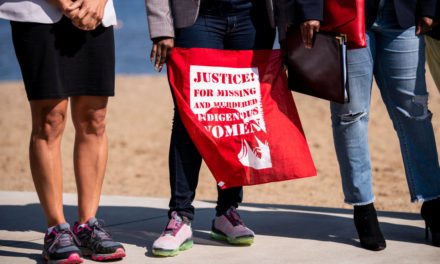
If you search our Inclusion Solution posts over the years, you will see that there are a number focused on the idea that “Words Matter.” We recognize that the words we use to talk about our work and the interpretations of the words and concepts are critical to making progress. In the context of decolonizing DEI work, it is imperative that we begin to muster up the courage to call out language that perpetuates injustices and inequities, whether intentionally or not. It is important to stop using language that sanitizes meanings in service of white fragility or to satisfy those in power—and replace it with heretofore taboo terminology, especially in the corporate world.
It is important to stop using language that sanitizes meanings in service of white fragility or to satisfy those in power—and replace it with heretofore taboo terminology, especially in the corporate world. Click To TweetIn previous posts in this series, our team has challenged a focus on the “business case;” offered considerations for rethinking our work in the context of capitalism; and encouraged leaders to center equity in their design and development of DEI strategies and efforts.
Over the years, I have worked with corporate clients in developing elaborate business case documents that take months to draft, and numerous people and departments, from communications to legal, who have to sign off on the final version. Often, by the time it goes through all of these edits to be deemed worthy of C-suite consumption, any words that would potentially cause a legal risk or are not in keeping with the socialized lexicon of the organizational culture have been removed or replaced. The conversations usually go like this: “We can’t say it that way to leaders. We have to put a positive spin on it.” Or “We don’t use these words here.” From a legal perspective, such words are thought to increase risks. From a communications perspective, they sound too negative.
Often these documents end up being framed from a capitalistic focus with words and phrases like: “Diversity drives innovation,” “More women in the C-suite drive profits,” “Opportunities to sell more products to multicultural consumers.” They are less likely to be framed around historic inequities and injustices.
I have also worked with corporate leaders who declare, “I don’t care anything about the profit potential, it is simply the right thing to do.” While the moral perspective is laudable, too often, leaders who declare this motivation don’t think they need to learn anything about the experiences of historically marginalized groups. They think that their good intentions will intuitively lead them to the right actions.
For some, there is a belief that it has to be one or the other — capitalism or morality. To mitigate that binary thinking, I have heard many DEI practitioners and other leaders embrace a “both/and” perspective: It is the right thing to do and the right thing to do for business.
In corporate spheres, we have mastered the language for “it is the right thing to do for business” but shy away from language that gets to the structural historic “isms” that would support the “it is just the right thing to do” moral justification.
For example, even the term “equity” is newer to the D&I lexicon in the corporate world, especially in the U.S. (Canada and other countries embraced an equity framework decades ago) and it is not without its controversy. Equity can be defined as treatment of people according to what they need and deserve, and with consideration to structural and historical barriers. This is contrasted with the more familiar term of “equality” which connotes that we treat everybody the same. One client representative I worked with spent almost a year trying to convince their organization that it should add equity to its D&I strategy. Other clients have admitted that they are still trying to get to a consistent understanding of diversity and inclusion and are definitely not ready to introduce the concept of equity. If we can’t even introduce the idea of equity, we will not be able to decenter “corporate speak” that perpetuates dominant culture norms and thwarts progress. Consider these examples.
If we can’t even introduce the idea of equity, we will not be able to decenter “corporate speak” that perpetuates dominant culture norms and thwarts progress. Click To Tweet
Words |
Connotation |
Decolonized Language |
| Organizational “Fit” |
Assumes there is a specific type of person who will “assimilate” into the existing norm (often white male)
|
Organizational “Add.” Think about people with diverse backgrounds as adding because of their differences |
| Minority | The term “minority” suggests “less than” — not only in numbers but also in value. | Be specific about the group you are referencing; e.g. Black/African American, LGBTQ, women, etc. |
| “Diverse” Candidate
|
Can “other” those who are part of historically underrepresented groups and exclude those who are not. Technically, everyone is diverse — we are each unique. | Same as above: name the diversity you are referencing. |
| “Qualified” | “We want to find ‘qualified’ minorities.” We don’t say we want to find qualified whites. This language suggests that historically underrepresented groups will not be qualified. | Drop the word “qualified” and speak to the specific skills. “We need someone with experience in…” |
| “Executive Presence” | Normalizes characteristics typically associated with dominant groups (i.e. white, heterosexual males) | Eliminate this term from your lexicon. It is fraught with numerous behavioral interpretations that often ignore and devalue cultural differences |
If the corporate world is serious about the claim that diversity and inclusion is “just the right thing to do,” — which aligns with a social justice framework — there is quite a bit of language to learn, unlearn and relearn, as many concepts are misinterpreted or initially feel uncomfortable in corporate D&I spaces.
Below are some terms and concepts used in social justice work that we need to become comfortable with in service of decolonizing DEI work in the corporate world. The Winters Group consciously promotes understanding and mapping the intersection of these two philosophies (corporate and social justice) that are purportedly trying to achieve similar goals.
Social Justice
Let’s start with social justice, a term until recently, we rarely heard in the corporate world, unless in philanthropy conversations. It means the way in which human rights are experienced in the everyday lives of people at every level of society and the fair distribution of wealth, opportunities and privileges. Persistent gender wage inequities are a matter of social justice. Could these inequities be mitigated if the organization embraced a social justice philosophy?
Racism/Racist
Many people still believe that racism is something that only happens interpersonally, not recognizing that, while it does happen at the individual level, it is more insidious as a set of systems and structures that favor the dominant group (mostly whites) and negatively impact subordinated groups. Racism involves one group having the power to carry out systematic discrimination through the institutional policies and practices.
Similarly, we are uncomfortable with the term racist. Calling someone racist has wrongly become akin to alleging that they are a despicable person. There is also a difference between being non-racist and anti-racist. Non-racist is an inactive, passive belief that racism is wrong. It is one who rejects racism. Anti-racists take a stand in their sphere of influence to actively oppose racism. For example, a non-racist might not tell a racist joke, but would not intervene when someone else did. Perhaps the non-racist would even laugh along with others. An anti-racist would not laugh at the joke and would also go one step further to let the person know of the inappropriateness of the joke.
Some theorists believe that at the core, we are all racists as a result of being a part of a society whose very foundation was built on racist ideals and practices that persist today. Brain science reveals that we internalize racist messages from a racist society that become a part of who we are — whether we’re aware of it or not. Unless we are willing to use the term — not to demean, blame or convict, but to acknowledge these realities — we cannot address racist systems that undergird our organizational practices. I know that corporations do not like to use this term because of the legal risks of admitting to racism. Notwithstanding that very valid concern, we have to be willing to learn more about the history of racist systems that may still unwittingly drive processes and practices. We have to say the word to address the problem.
White/Whiteness
Many sociologists assert that white people in the United States believe they are, in essence, “raceless” or “culture-less.” In a 2019 Pew Survey on race in America, only 15% of white people responded that their race was important to their identity. This is contrasted with 75% of Black people and 56% and 55% of Latinos and Asian Americans, respectively. Whiteness is normalized in culture, creating an unawareness of the set of privileges associated with white identity, also known as white privilege.
Whiteness Theory posits that whiteness is the default of American culture, and as a result of this default, white people cannot see the advantages and disadvantages of being white. This process is so pervasive that many do not even want to discuss the role whiteness plays in the DEI dynamic. In many sessions that I conduct, white people express extreme discomfort in talking about whiteness or any aspect of racial dynamics. White people must engage in honest self-reflection on the messages, images, values, beliefs, and experiences they have had living in a culture that continues to prioritize their worldviews as the better ones — white supremacy.
White Supremacy
When people hear white supremacy, they think Ku Klux Klan, neo-Nazis, white nationalists and avowed hate groups. While these groups openly admit their hatred for Blacks, Jewish people, Immigrants, etc., and are prone to perpetrating violence against them based on their beliefs that whites are superior and all others should be eliminated, they by no means embody the only definition of white supremacy.
White Supremacy is the ideology — whether conscious or unconscious, explicit or implied — that white people and the ideas, thoughts, beliefs, and actions of white people are superior to those of people of color. If the only understanding of whiteness is crafted by the hate groups, that becomes the default definition of “whiteness.”
These are just a few terms that often make corporate folks very uncomfortable. I think one main reason is that their meaning has been misinterpreted — “only radicals talk like that.” However, if we are going to change course and finally make progress in diversity, equity, and inclusion, we may need to get a little more radical — beginning with the language we use.
If we are going to change course and finally make progress in diversity, equity, and inclusion, we may need to get a little more radical — beginning with the language we use. Click To TweetBen and Jerry’s is an example of a company that is not afraid to speak out publicly against racism. The homepage on their website is 7 Ways to Know Systemic Racism is Real. They have a flavor called Justice Remix’d. Radical? I would say just real.




















Love this article. Very insightful, educational and helpful by offering the right terms to use. Often times I find people use words like “minority” or “marginalized groups” to refer to the full set of identity groups. What is the right decolonized term to use to refer to all identities collectively (e.g. black, Hispanic, LGBTQ+, etc). To name them all when you are speaking of all collectively is the place I find it to be challenging to find the right word. Any recommendations here?
Hi Carol,
I am just seeing you comment. Sorry for the delay. There is no one right term. Some might be: Historically underrepresented groups or historically marginalized or oppressed groups.